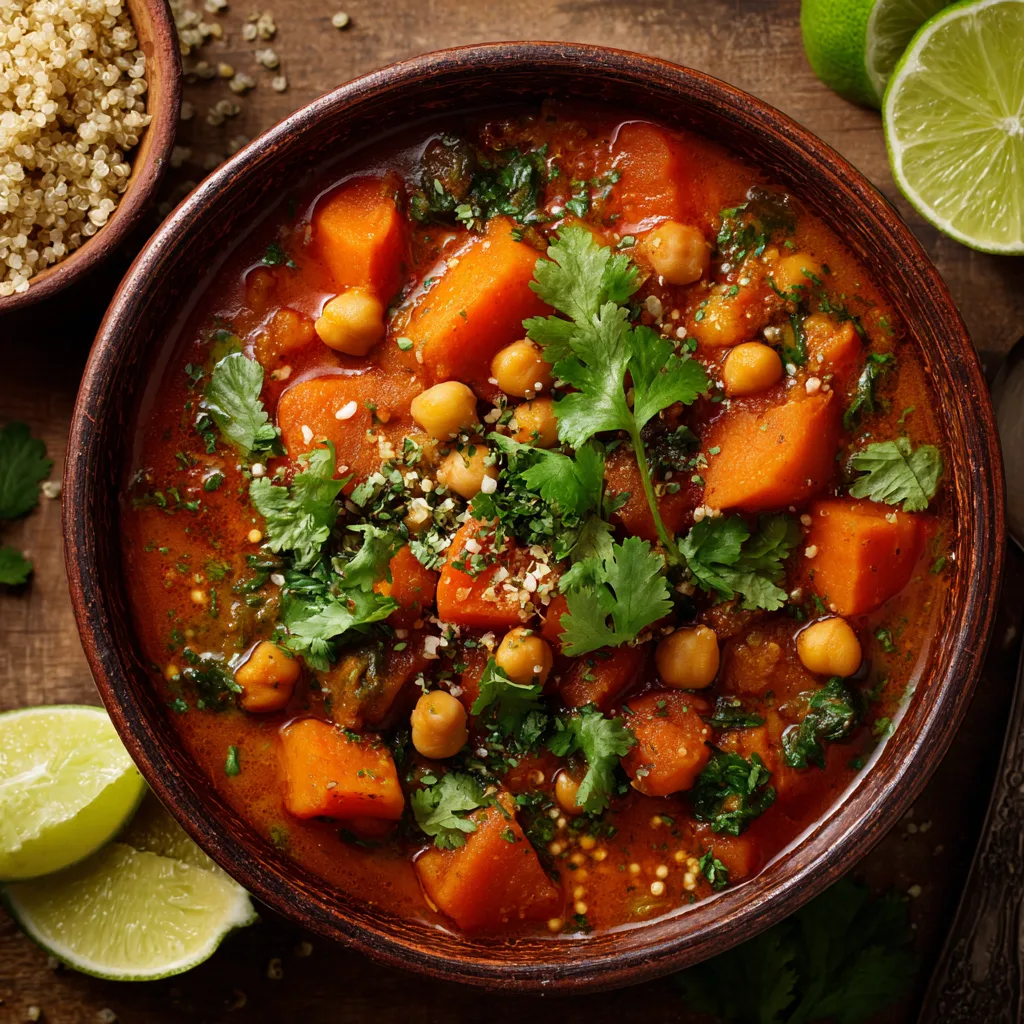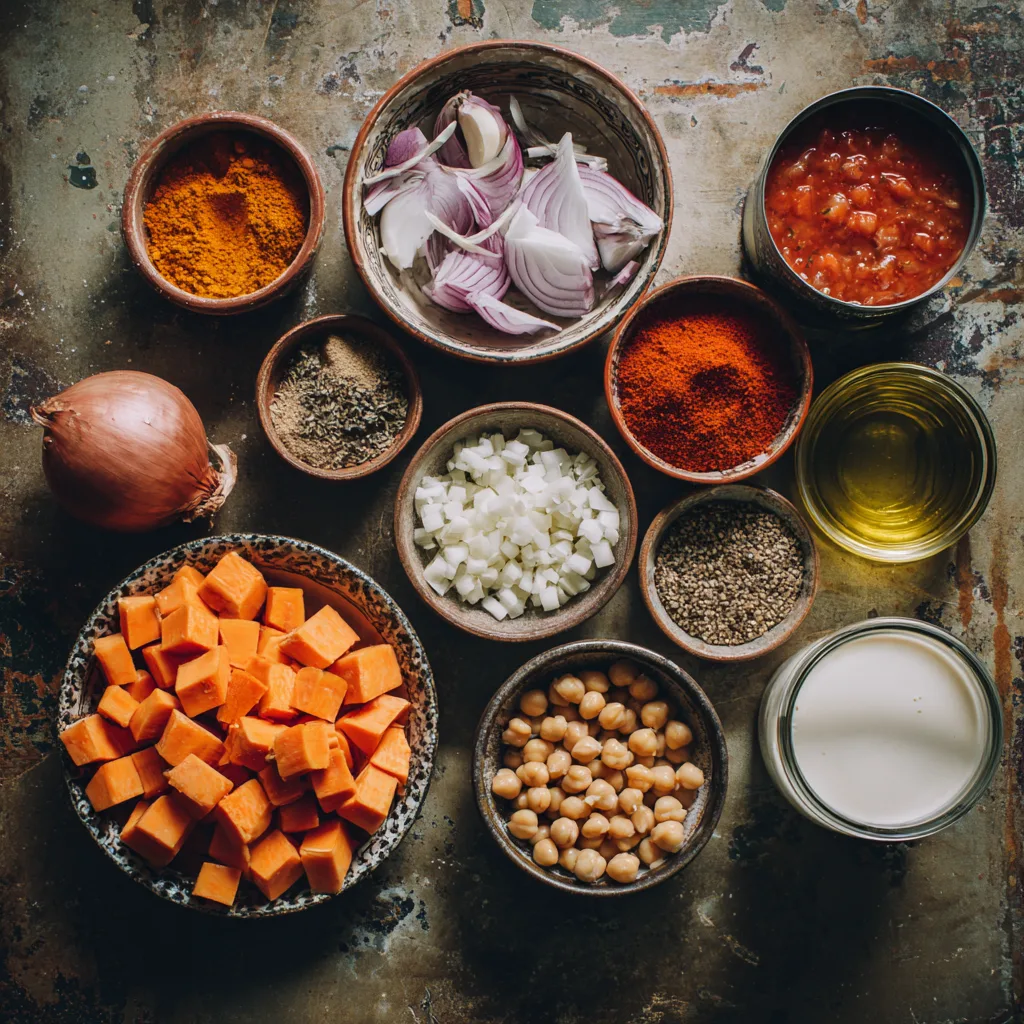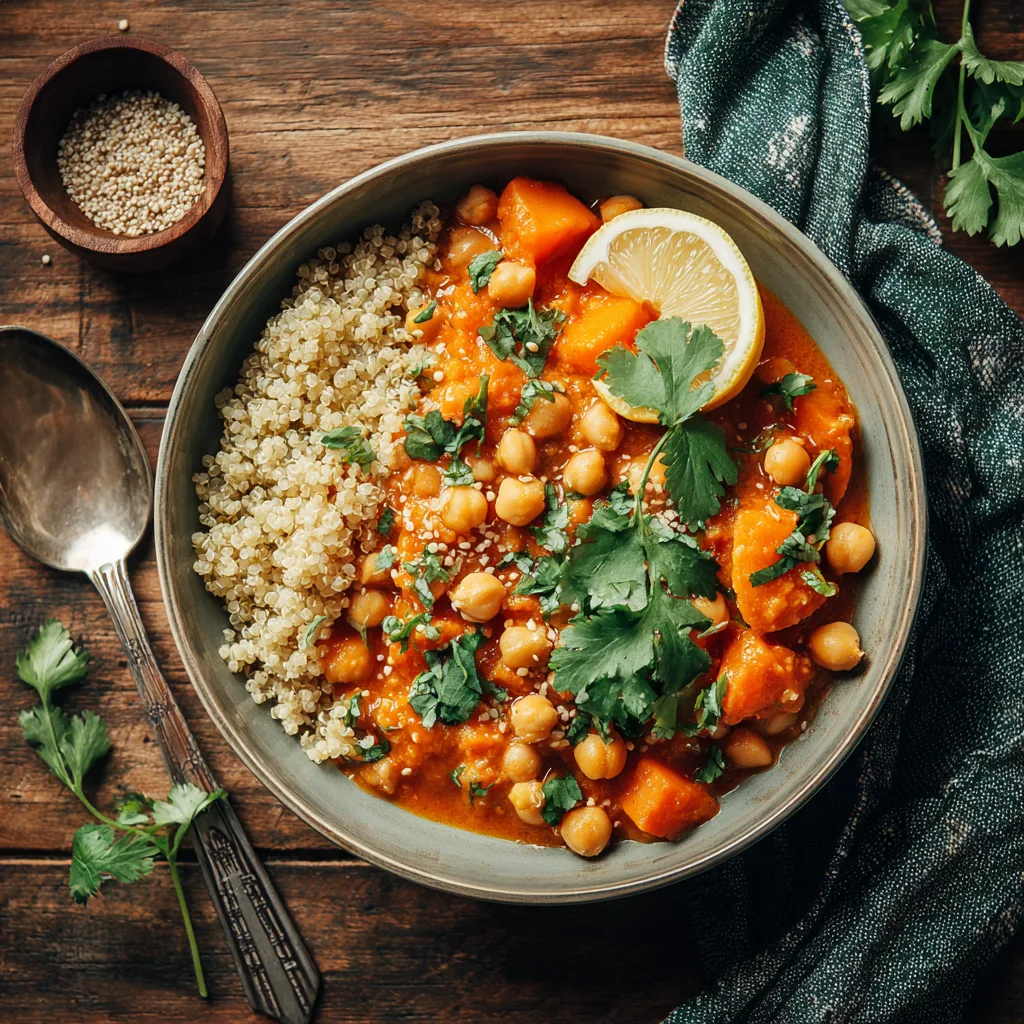Low glycemic index meals have become a smart choice for anyone looking to stabilize blood sugar, reduce energy crashes, or manage conditions like diabetes and insulin resistance. But beyond the science, they’re simply a better way to eat—more satisfying, more balanced, and surprisingly full of flavor. Whether you’re curious about what GI actually means or you’re hunting for delicious recipes that won’t spike your sugar, you’re in the right place. This practical guide breaks it all down—what to eat, why it works, and how to build simple, crave-worthy meals that support better health from breakfast to dinner.
Table of Contents
Table of Contents

How Low Glycemic Index Meals Changed My Kitchen—and My Health
A Family Story Stirred with Purpose
Low glycemic index meals became more than just a trend in my home—they became a necessity. I still remember the day my doctor told me my blood sugar was creeping too high. It wasn’t just about cutting out sugar; it was about learning how certain foods affected my energy, mood, and long-term health. That sent me straight to my recipe box—and back to my grandma’s kitchen.
Growing up in Stillwater, Minnesota, where winters are long and hearty meals are a way of life, I learned early how food comforts and connects. But it was only as an adult that I realized those same comforting meals could be tweaked to better support my health—without losing flavor or soul.
That’s when I started experimenting with low glycemic index meals. I swapped white rice for quinoa, mashed potatoes for lentil stew, and added more legumes, leafy greens, and slow-burning whole grains to my weekly menu. The changes were simple, but the results? Energizing. Satisfying. Sustainable.
Whether you’re managing diabetes, watching your weight, or just trying to eat smarter, this guide is here to help. With easy swaps, helpful tables, and practical tips, you’ll discover how to create low glycemic index meals that don’t feel like a compromise. They feel like a win.
And remember, you don’t need a nutrition degree or a fancy pantry. Just a little heart—and someone cheering you on. That’s me.
Why Glycemic Index Matters More Than You Think
The glycemic index (GI) measures how quickly a food raises your blood sugar. Foods are ranked from 0 to 100—low GI is 55 or under, moderate is 56–69, and high is 70+. Low GI meals help you avoid sudden spikes and crashes in blood sugar, which is especially helpful for people with diabetes, insulin resistance, or anyone trying to stay energized and full longer.
But there’s more: low GI eating supports better cholesterol levels, improved digestion, and even weight loss when paired with whole, unprocessed foods. Plus, it’s not about eliminating carbs—it’s about choosing the right ones.
Throughout this article, I’ll guide you through the science, share my go-to low glycemic meals, and show you how to build a better plate—step by delicious step.
The Real Science Behind Low Glycemic Index Meals
What Makes a Meal Low GI? The Science Simplified
Understanding low glycemic index meals starts with knowing what the glycemic index (GI) even is. GI ranks carbohydrates based on how quickly they raise blood sugar after eating. The scale goes from 0 to 100. Foods under 55 are considered low GI, meaning they digest slowly, providing a steady release of energy. High GI foods (70 and up) spike your blood sugar fast—and then crash it just as quickly.
But GI isn’t the whole story. The glycemic load (GL) adds portion size into the equation. For example, watermelon has a high GI, but its glycemic load is low because it doesn’t have a lot of carbs per serving. That means you don’t have to fear fruit—just be mindful of how much you eat and what you pair it with.
Combining protein, fat, and fiber with your carbs slows down digestion and lowers the overall glycemic impact of the meal. That’s why a bowl of lentils with leafy greens and olive oil is so much better than white bread alone.
How Cooking and Pairing Affects GI
Food prep affects GI more than you might think. For example, overcooked pasta has a higher GI than al dente pasta. Cooling cooked rice or potatoes and eating them chilled or reheated creates resistant starch, which reduces their GI.
Acids like vinegar or lemon juice can also lower the glycemic response of a meal. Add lemon to your quinoa salad or drizzle apple cider vinegar on roasted veggies for a bonus blood sugar benefit.
Even fat plays a role—just a handful of nuts or a bit of avocado can slow carb absorption. For example, pairing Healthy Chicken Cauliflower Rice Casserole with leafy greens or roasted veggies makes a low GI dinner that’s as comforting as it is nourishing.
If you’re looking for a satisfying lunch, check out this Thai Peanut Chicken Wraps recipe. With healthy fats from peanut butter and fiber-rich veggies, it’s a smart example of how ingredients work together to lower GI naturally.
Print
Low Glycemic Index Meals: 21 Remarkable Recipes for Balanced Blood Sugar
- Total Time: 35 mins
- Yield: 4 servings 1x
Description
A hearty and flavorful curry made with sweet potatoes, chickpeas, and warming spices. This low glycemic index recipe is perfect for meal prep and keeps blood sugar stable without sacrificing comfort or flavor.
Ingredients
- 2 medium sweet potatoes, peeled and diced
- 1 can (15 oz) chickpeas, drained and rinsed
- 1 small onion, diced
- 2 garlic cloves, minced
- 1 tbsp olive oil
- 1 tsp cumin
- 1 tsp turmeric
- 1 tsp paprika
- 1/2 tsp ground ginger
- 1/2 tsp cinnamon
- 1/4 tsp cayenne (optional)
- 1 cup crushed tomatoes
- 1 cup vegetable broth
- 1/2 cup coconut milk (unsweetened)
- Salt and pepper to taste
- Fresh cilantro for garnish
Instructions
- Heat olive oil in a large pot over medium heat. Add diced onion and sauté for 2–3 minutes.
- Add garlic, cumin, turmeric, paprika, ginger, cinnamon, and cayenne. Stir for 1 minute until fragrant.
- Add diced sweet potatoes and chickpeas. Stir to coat with the spices.
- Pour in crushed tomatoes, vegetable broth, and coconut milk. Bring to a boil.
- Reduce heat, cover, and simmer for 20–25 minutes or until sweet potatoes are fork-tender.
- Taste and adjust seasoning with salt and pepper.
- Garnish with fresh cilantro before serving. Enjoy over quinoa or with whole grain flatbread.
Notes
For extra fiber, add spinach or kale in the last 5 minutes of cooking.
To lower the fat, use light coconut milk or substitute with unsweetened almond milk and a splash of lemon.
Leftovers keep well in the fridge for up to 4 days and freeze beautifully.
- Prep Time: 10 mins
- Cook Time: 25 mins
- Category: Dinner
- Method: One-Pot
- Cuisine: Global Fusion
Nutrition
- Serving Size: 1 bowl
- Calories: 340
- Sugar: 7g
- Sodium: 430mg
- Fat: 12g
- Saturated Fat: 4g
- Unsaturated Fat: 8g
- Trans Fat: 0g
- Carbohydrates: 45g
- Fiber: 10g
- Protein: 9g
- Cholesterol: 0mg
Foods That Fuel You—What to Eat on Low Glycemic Index Meals
The Building Blocks of a Low GI Diet
When building low glycemic index meals, it’s essential to start with the right foundation. These aren’t exotic or expensive foods—they’re everyday ingredients that digest slowly, provide lasting energy, and won’t send your blood sugar skyrocketing.
Here’s a breakdown of go-to foods you can always rely on for low GI meal planning:
- Legumes & pulses: Lentils, chickpeas, black beans, and kidney beans are powerhouses of fiber and protein. They’re affordable, filling, and deeply versatile.
- Whole grains: Opt for barley, bulgur, steel-cut oats, or quinoa over white rice or refined grains. These options stabilize blood sugar and keep you full longer.
- Non-starchy vegetables: Think spinach, kale, zucchini, broccoli, cauliflower, bell peppers, and Brussels sprouts. Load your plate with these!
- Fruits with fiber: Berries, apples, pears, and citrus fruits like oranges are all low GI when eaten whole.
- Healthy fats: Avocado, olive oil, nuts, and seeds not only support heart health but also blunt glycemic spikes.
For a hearty and wholesome dinner, this Sweet Potato and Chickpea Curry checks all the boxes: fiber-rich legumes, beta-carotene-packed sweet potatoes, and blood-sugar-friendly spices like turmeric and cumin.
Easy Ingredient Swaps That Lower GI Instantly
Making low glycemic index meals doesn’t mean giving up your favorites—it just means learning how to swap smartly. For example:
| High GI Food | Low GI Alternative |
|---|---|
| White rice | Quinoa or barley |
| Instant oatmeal | Steel-cut or rolled oats |
| White potatoes | Sweet potatoes or lentils |
| White bread | Sprouted grain bread |
| Sugary cereals | Greek yogurt + berries |
Here’s a fun breakfast idea: skip the cereal and try a veggie-forward option like Baked Feta Eggs. Loaded with protein, healthy fats, and greens, this dish keeps your blood sugar steady and your taste buds happy.
By choosing these lower-GI ingredients and pairing them thoughtfully, you create meals that satisfy cravings while supporting your long-term health goals.

How to Build Low Glycemic Index Meals That Actually Work
Balance Your Plate for Steady Energy
Creating balanced low glycemic index meals isn’t complicated—but it is intentional. Every ingredient you add should work with the others to slow digestion, avoid spikes, and keep you full for hours. That’s why the plate method is such a helpful visual tool.
Here’s how to break it down:
- ½ plate: non-starchy vegetables (leafy greens, broccoli, cauliflower)
- ¼ plate: lean protein (grilled chicken, tofu, lentils)
- ¼ plate: low GI carbs (quinoa, sweet potato, bulgur)
Add a drizzle of healthy fat—like olive oil or tahini—and you’ve just created a blood sugar-friendly powerhouse.
Need a quick, balanced lunch? Try this Healthy Loaded Potato Taco Bowl. It combines sweet potatoes, lean ground turkey, veggies, and avocado for a colorful, fiber-filled, low GI win.
Smart Add-Ons That Lower Glycemic Impact
A few easy tweaks can transform your everyday meals into low glycemic index meals without sacrificing flavor or comfort.
Use vinegar or citrus: Adding apple cider vinegar, lemon juice, or even pickled veggies to meals can lower the glycemic response. For example, splash a little lemon on your grain bowls or mix vinegar into salad dressings.
Cool, then reheat starches: Let cooked rice, oats, or potatoes cool in the fridge before reheating them. This creates resistant starch, which the body digests more slowly—making it perfect for batch cooking low GI meals.
Pair carbs with fats or protein: A handful of walnuts, a dollop of Greek yogurt, or a few slices of avocado slows digestion and keeps blood sugar stable. One perfect example? The Creamy Gnocchi with Spinach and Feta—it combines healthy fats, fiber, and slow carbs in one comforting dish.
With a few of these techniques, even traditionally high-carb dishes can be modified into blood-sugar-friendly meals that support your health without sacrificing taste or comfort.
Easy Low Glycemic Index Meals You’ll Actually Want to Cook
Low GI Breakfasts That Start Your Day Right
Breakfast can make or break your blood sugar balance. Instead of reaching for toast or cereal, build low glycemic index meals that combine fiber, protein, and healthy fat.
Here are a few satisfying options:
- Overnight oats with chia seeds, unsweetened almond milk, and fresh berries
- Greek yogurt parfait with nuts, flaxseed, and a few slices of pear
- Veggie-loaded egg muffins or a tofu scramble with spinach and bell peppers
If you want a morning meal that’s both nourishing and flavor-packed, try the Garlic Parmesan Sweet Potato Wedges with poached eggs or avocado on the side. The sweet potatoes are lower GI than white bread and provide fiber and antioxidants to fuel your morning.
Low GI Lunch & Dinner Favorites You’ll Keep on Repeat
When it comes to lunch and dinner, the possibilities are endless—and never boring. Here are a few meal ideas that check all the right boxes:
- Quinoa and black bean bowls with grilled veggies and tahini drizzle
- Lentil curry with cauliflower rice or a side of roasted eggplant
- Zoodle stir-fry with tofu or shrimp, and a splash of coconut aminos
One fan-favorite is the Low Carb Philly Cheesesteak Casserole—all the savory flavor, none of the blood sugar crash. With its protein-rich beef and loads of peppers, it’s satisfying and smart.
Don’t be afraid to batch cook these dishes and portion them out for the week. Most low GI meals taste even better the next day!
These meals aren’t just for people managing blood sugar—they’re for anyone who wants to eat well, feel full, and enjoy food that loves you back.
Your Sample 1-Week Plan for Low Glycemic Index Meals
Simple Weekly Plan That Balances Blood Sugar
You don’t need a nutritionist or a spreadsheet to eat smarter. This 1-week plan of low glycemic index meals includes real food, real flavor, and just enough structure to keep things easy and sustainable.
The key? Prep ahead when you can. Roast a batch of sweet potatoes, cook a pot of lentils or quinoa, and chop a few veggies so meals come together in minutes.
Here’s what a full week of low GI eating might look like:
| Meal | Example |
|---|---|
| Monday | Baked Feta Eggs + spinach (breakfast) | Quinoa chickpea bowl (lunch) | Lentil curry (dinner) |
| Tuesday | Greek yogurt + walnuts (breakfast) | Sweet Potato Taco Bowl (lunch) | Grilled salmon + bulgur salad (dinner) |
| Wednesday | Overnight oats + berries | Veggie stir-fry + tofu | Creamy Gnocchi with Spinach and Feta |
| Thursday | Avocado toast on sprouted grain bread | Roasted veggie + lentil salad | Zucchini noodles + pesto chicken |
| Friday | Cottage cheese + pear slices | Thai Peanut Chicken Wraps | Low Carb Cheesesteak Casserole |
Prep Tips + Grocery List Essentials
Before the week starts, stock up on low GI pantry staples:
- Grains: Quinoa, steel-cut oats, barley, bulgur
- Proteins: Eggs, Greek yogurt, chicken breast, canned beans, lentils
- Veggies: Spinach, kale, sweet potatoes, bell peppers, broccoli, zucchini
- Fruits: Berries, apples, oranges, pears
- Extras: Olive oil, tahini, apple cider vinegar, chia seeds, flaxseed, spices
This plan doesn’t just help with blood sugar—it supports energy, mood, digestion, and long-term wellness. And the best part? It’s real food, full of color and comfort.
Want to batch one of the most popular prep-friendly dinners? The Easy Roasted Pumpkin Soup Recipe is cozy, low GI, and easy to freeze.
You’ll also love the Banana Oatmeal Bars as a low GI snack or dessert—they’re naturally sweetened, fiber-rich, and freezer-friendly.

Busting Myths About Low Glycemic Index Meals & Making It Work for You
Myths That Keep People Stuck (And What’s Actually True)
When it comes to low glycemic index meals, misinformation is everywhere. Let’s clear up a few of the most common myths that might be holding you back from eating better.
Myth #1: All sweet foods have a high GI.
False. Watermelon and carrots, for example, have a high GI but a very low glycemic load. That means eating a reasonable portion won’t spike your blood sugar. Meanwhile, some cookies made with fat or fiber may technically rank “low GI”—but they’re still not good for you overall.
Myth #2: You have to give up all carbs.
Not even close. It’s not about eliminating carbs—it’s about choosing carbs that are higher in fiber and digested slowly. Think oats, beans, sweet potatoes, and fruits with skin.
Myth #3: GI is the only thing that matters.
Nope. The total load, portion size, and what else is on your plate matters just as much. That’s why meal composition, not just a single food’s GI, is key.
If you’re craving a warm, cozy comfort food that fits your goals, try this Pumpkin Gnocchi. It’s rich in fiber and perfect when paired with greens or grilled protein.
Personalizing Low GI Eating for Your Body
The truth is, low glycemic index meals affect everyone a little differently. What spikes one person’s blood sugar might barely move another’s. That’s why personalization matters.
Here’s how to start:
- Track how you feel: If a food makes you crash or crave more sugar, it’s a sign to tweak your portions or pairings.
- Try a CGM (continuous glucose monitor) if managing diabetes or prediabetes. These tools offer real-time feedback and help fine-tune your meals.
- Listen to your hunger: Low GI meals should leave you full but not heavy. Adjust fat, protein, and fiber until your meals feel just right.
It’s all about learning what works for your lifestyle and your body—just like how I adapted my favorite comfort meals for better balance.
For instance, instead of traditional pasta, I turned to veggie-forward comfort food like Creamy Gnocchi with Spinach and Feta—rich, satisfying, and lower in glycemic impact than expected.
Remember, low GI eating isn’t a diet. It’s a lifelong upgrade to how you feel, function, and thrive.
FAQs – low glycemic index meals
What meals are low glycemic?
Low glycemic index meals are those that include ingredients with a GI value of 55 or less and are balanced with protein, fiber, and healthy fats. Great examples include lentil curry with brown rice, quinoa bowls with roasted vegetables, or grilled chicken over a bed of leafy greens. You can also enjoy Sweet Potato and Chickpea Curry or Baked Feta Eggs for blood sugar–friendly comfort meals.
What food has a low glycaemic index?
Foods with a low glycaemic index (GI ≤ 55) include:
Legumes: lentils, chickpeas, black beans
Whole grains: quinoa, barley, steel-cut oats
Fruits: apples, berries, oranges, pears
Non-starchy vegetables: spinach, broccoli, kale, zucchini
Dairy: plain Greek yogurt, unsweetened almond milk
Healthy fats: avocado, nuts, seeds
These ingredients form the backbone of most low GI recipes and support stable blood sugar and lasting energy.
What are low GI recipes?
Low GI recipes are dishes created using ingredients that digest slowly and release glucose gradually into the bloodstream. These recipes typically combine low GI carbs (like sweet potatoes or barley) with protein and healthy fat. Try meals like Low Carb Philly Cheesesteak Casserole or a quinoa salad with chickpeas and lemon-tahini dressing for delicious, slow-burn energy.
What is a good low GI diet?
A good low GI diet focuses on whole, unprocessed foods with a low glycaemic index. It includes:
Whole grains like oats and quinoa
Plenty of non-starchy vegetables
Legumes, beans, and lentils
Lean proteins like chicken, tofu, and fish
Healthy fats such as olive oil, avocado, and nuts
Meal composition matters too. Combine carbs with fat, fiber, or protein to reduce the glycemic impact.

You might also like these recipes
Quick & Easy Meals
Classic Vegetable Beef Soup with Hearty Beef Broth
Healthy & Fresh
Crispy Shrimp Tacos with Creamy Cabbage Slaw – Easy & Flavor-Packed
Quick & Easy Meals
Hearty Lentil Soup with Spinach & Carrots – Plant-Based Comfort